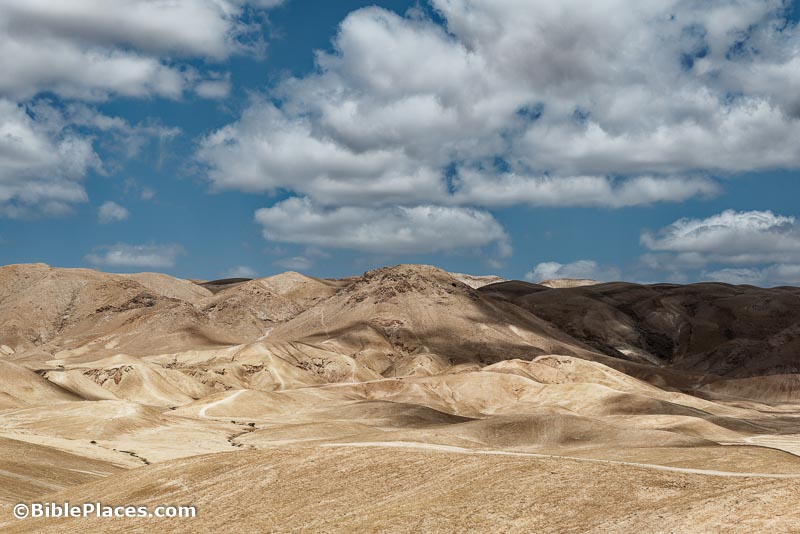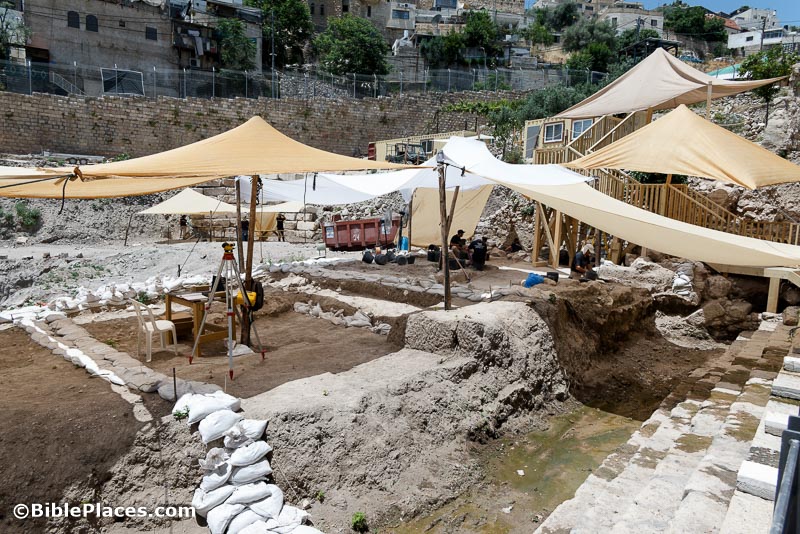Excavations conducted during the laying of a water pipe not too far from Lachish revealed the “most ancient gate ever discovered in Israel.” They are dating it to about 300 years earlier than the Early Bronze gate at Tel Arad. The gate has already been backfilled.
Archaeologists excavating Tel Shimron announced the discovery of a massive Middle Bronze monument that was 15 feet tall and covered the entire acropolis. The monument was very well-preserved because soon after its construction it was filled in with gravel.
A beautiful Herodian ceiling panel was discovered in secondary use in the Ophel excavations (YouTube).
One of the arches in Caesarea’s Roman aqueduct collapsed on Friday.
A suspension bridge crossing the Hinnom Valley is now open to pedestrians (YouTube).
Zedekiah’s Cave (aka Solomon’s Quarries) reopened earlier this month, and Zahi Shaked gives a 30-minute tour.
Some Jews and Christians are arguing over the right to pray in the area of a possible tomb of Elisha at Stella Maris on Mount Carmel.
Israeli officials are considering loaning the Megiddo Mosaic, which comes from an early Christian building, to the Museum of the Bible. (Ilan Ben Zion’s AP article is a disappointment.)
WUNC interviews Jodi Magness upon the completion of her 11-year excavation of the Huqoq synagogue.
Aviva and Shmuel Bar-Am write about some of the many ritual baths that have been discovered throughout Israel. The article includes many photos.
Abigail Leavitt recounts various sites she visited this summer in Jerusalem. She has another post about a tour of the Shephelah.
“The Jewish National Fund, KKL-JNF, recently welcomed guests to visit the ancient Jewish synagogue in Ma’on, located in Israel’s southern Negev desert.”
Tour Caesarea virtually with DIVE (Digital Interactive Virtual Experiences) on August 30 ($20).
Joel Kramer goes to Mamre in the latest episode from Expedition Bible.
There are a number of late-summer festivals being held around Israel.
New release: The Changing Landscape of Israeli Archaeology: Between Hegemony and Marginalization, by Hayah Katz (Routledge, $42/$136).
The latest Jerusalem Tracker has been posted, with a roundup of news, publications, and media.
It may be hard to believe, but apparently there are unscrupulous shopkeepers in the Old City of Jerusalem.
HT: Agade, Gordon Dickson, Al Sandalow, Will Varner, Arne Halbakken, Roger Schmidgall, Keith Keyser, Wayne Stiles, Explorator
With the Israeli military gone, there are no obstacles to visiting Hyrcania in the Judean wilderness.


